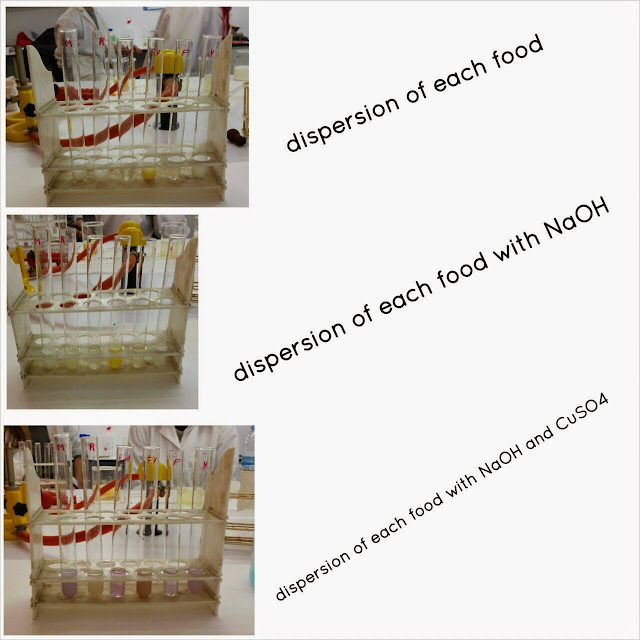- Introducció:
La catalasa és un enzim present ens els peroxisomes de les cèl·lules animals i vegetals que s'encerrega d'eliminar l'aigua oxigenada que es forma en algunes reacciones del metabolisme. La reacció químia és la següent:
2 H2O2 (l) → 2 H2O (l) + O2 (g)
- Material:
-Patata, tomàquet i pastanaga.
-Tubs d'assaig de coll ample.
-Termòmetre.
-Aigua oxigenada 3%.
-Pinces.
-Tisores.
-Bisturí.
- Protocol:
-Tallarem 2 trossos la patata, el tomàquet i pastanaga que pesin més o menys el mateix (1 cm3)
-També tallarem un tros de fetge i cor de la mateixa mida i pes.
-Ho posem en cinc tubs amb 5ml d'aigua destil·lada i 2ml d'aigua oxigenada. I mesurarem l'alçada en mm de les bombolles.
-Patata: 0,7gr, Tomàquet: 0,9, Pastanaga: 0,9, Fetge: 0,7 i Cor: 1gr.

- Preguntes:
Variable dependent i independent? Dependent: alçada de les bombolles i Independent: els diferents teixits.
Problemes què es vol investigar? Quin teixit presenta més activitat de la catalasa?
Explicació dels resultats: La catalasa presenta més activitat en els teixits animals.
Experiment 2: Com afecten diferents factors en l'activitat de la catalasa?
1er Tub: tros de teixit animal a temperatura ambient (T=19º) (pes: 1gr)
2n Tub: tros de teixit animal amb 10ml d'HCl al 10% (pes=0,89 gr)
3er Tub: tros de teixit animal congelat(T=3º) (pes: 0,7 gr)
4at Tub: Tros de teixit animal bullit (pes: 0,5 gr)
5è Tub: tros teixits submergit en una dissolució saturada de NaCl (pes: 0,7gr)
*Amb 5ml d'aigua destil·lada i 2ml d'aigua oxigenada.


- Preguntes:
-Variable dependent i independent? Dependent: alçada de les bombolles, Independent: diferents tractaments.
-Problema què es vol investigar? Com afecten els diferents factos en l'activitat de la catalasa?
-Explicació dels resultats: El teixit que ha estat tractat amb NaCl presenta una activitat de la catalasa.
- Quina és la funció de la catalasa en els teixits animals i vegetals? On es troba aquest enzim?
- Per què quan ens fem una ferida ens posem aigua oxigenada?





















